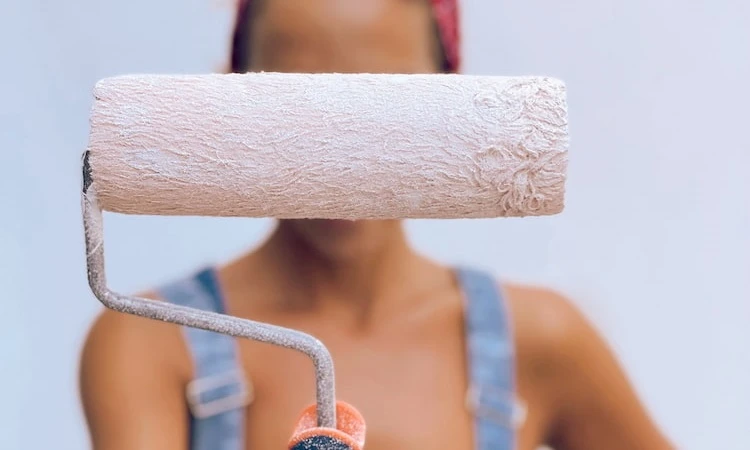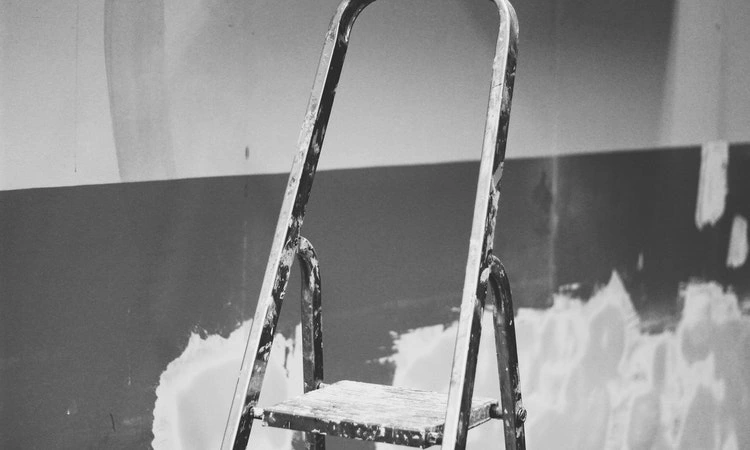Are you planning on painting your wooden fence, barn, or something else? Did it get rained on, and now you want to know if you can paint on wet wood? I have been where you are.
It is possible to paint on wet wood. But, the paint will most likely not last long. When you paint on wet wood, the paint develops adhesion problems. The best thing is to dry the wood as much as possible. Alternatively, you can wait for the wood to dry without interventions.
You can do a couple of things to speed up the drying time. You can use a hairdryer, a fan, paper towels, and sunlight to dry the wood faster.
This article will discuss why you should not paint wood while still wet.
I will also explain a couple of different ways you can speed up the drying time of the wood.
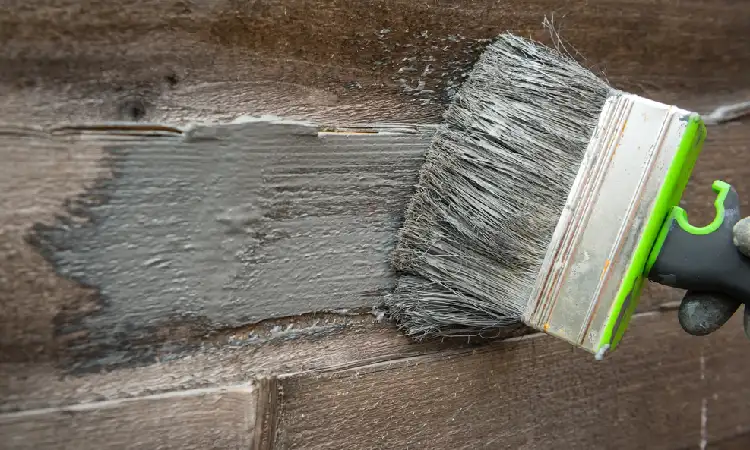
Is It a Good Idea to Paint on Wet Wood?
Generally, it is not considered a good idea to paint on wet wood. When you paint wet wood, the water in the wood and the solvent in the paint both have to dry.
The paint will take longer to dry because both the paint and the wood need to dry.
Paint applied on wet wood will not last as long, even with proper prep work. The paint will be unable to adhere to wet wood properly.
If the paint cannot properly adhere to the wood, it will crackle and peel easily.
Paint needs to be absorbed into the wood fibers to dry to the surface properly. When the wood is wet, the water takes up room in the wood’s fibers.
This lack of room makes it difficult for the paint to penetrate the wood and become long-lasting.
How Well Does Paint Stick To Wet Wood?
The paint does not stick to wet wood very well. The moisture on the wood will affect the performance of the paint.
Adhesion can be difficult when would is wet. If the wood is wet, the wood fibers absorb water.
The wood fibers can only absorb so much liquid. When the wood fibers have absorbed water, they will be unable to absorb the paint.
If the fibers can not absorb the paint, then the paint will not soak into the wood. Therefore the paint will not stick properly.
There is a way to improve the paint adhesion to the wet wood. You can apply a moisture-resistant or waterproof primer to the wood.
The waterproof primer can prevent the moisture in the wood from bleeding through the paint.
A moisture-resistant or waterproof primer allows the paint to stick better to the wood. However, there is no guarantee that the paint will adhere without peeling in the future.
It is important to note that oil and water do not mix well. Oil-based paints will wrinkle up and peel when painted on wet wood.
On the other hand, water-based paints will stick better to wet wood, but the paint will not be long-lasting.
How Long Does Wet Wood Need to Dry Before Painting?
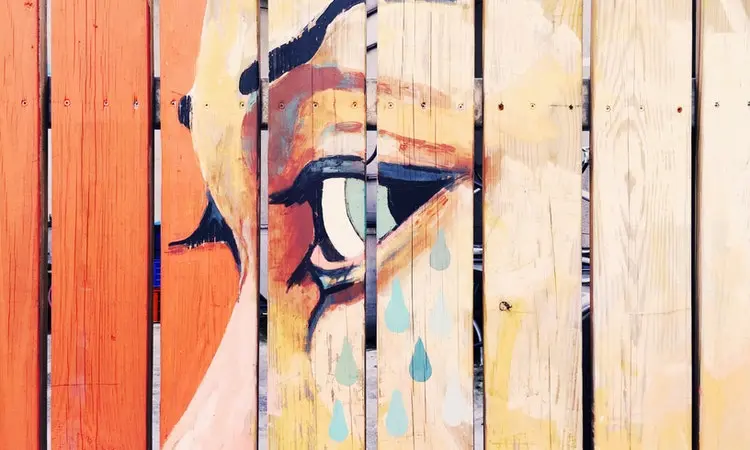
The amount of time wet wood needs to dry depends on several factors. The type of wood, the moisture content, and the ambient temperature all affect how long the wood needs to dry before being painted.
Softwoods will dry faster than hardwoods. Thin woods, such as plywood, will also dry faster. Thin woods are unable to absorb as much water.
Therefore, it takes less time for the water to evaporate and the wood to dry. But, it can still take 3 days for thin woods to fully dry.
If you only received a light sprinkling of rain, the wood may be dry enough to paint the next day. On the other hand, if you have a severe rainstorm, the wood can take 3-7 days to dry enough for paint.
To state it in simpler terms, the higher the moisture content of the wood, the longer it will take to dry.
Suppose the wood was not exposed to rain, but instead, you power-washed it. In that case, the wood can still take at least 3 days to dry.
In the next section, I will discuss how you can determine the moisture content of the wood.
The temperature around the wood can affect how long it takes the wood to dry. The water will be able to evaporate faster in warm non-humid weather.
High humidity will prevent the water from properly evaporating and cause the wood to take longer to dry.
This article focuses on painting wood that has gotten wet from the rain. Therefore, I assume the wood project you are working on is outside.
With that being said, I do want to state that wood will dry faster outdoors than inside.
If you have wood furniture that got wet from rain, you should leave it outside to dry as long as the weather is sunny and has low humidity.
How Can You Tell if the Wood is Dry Enough to Paint?
You will need to test the wood to determine if it is dry enough to paint. There are two popular methods for testing the moisture content of wood.
The first option is to use a moisture meter. The second option is what I like to call the old-school method.
Moisture Meter
You can purchase a portable moisture meter if you do not already own one. The meter will test the moisture content of the wood.
The prongs will have to be inserted as deep into the wood as possible. Within seconds the moisture content will be displayed on the meter’s screen.
Most paints require a moisture content of less than 15%. In other words, if the meter tells you the moisture content of the wood is higher than 15%, the wood is too wet to be painted.
It is recommended to have a moisture content of less than 12% when you paint interior wood.
The moisture meter is the most accurate method to test the moisture content of the wood. You can read the label on the paint to determine the ideal moisture content for your specific paint.
And have no fear; I promise to give you some methods on how you can dry the wood faster.
The Old School Method
This method is significantly cheaper, but it is not as accurate. For this method, you apply a few drops of water to the wood.
If the water is absorbed quickly, the wood is dry. If the water stays on the wood, it is too wet for painting.
The wood fibers cannot absorb water if they are already filled with water. Again, this is not the most accurate method. Even if the water is absorbed by the wood, the wood may be too wet for painting.
However, this method will work when you are in a pinch or do not have a moisture meter.
Discoloration
Have you ever seen a wooden picnic table after it stormed? You can just tell that the picnic table is soaked even if you did not witness the rain storm.
The discoloration of the wood can also help you determine if the wood is dry enough for paint.
If you can look at the wood and tell it is wet, do not paint it. Again, this is not an accurate method, but it can save you some time and money.
Your best option is to wait several days after it has rained before you start to paint.
How Do You Dry Wet Wood Faster Before Painting?

I will give you a couple of ways to dry the wet wood fast. These methods are not guaranteed to work for every project.
You may have to try multiple methods to dry the wood fully. You should check the moisture level throughout the drying process, no matter which method you use.
If you check the moisture content periodically, you can determine if your chosen method works. Some of these methods work better on different types of wood.
You can determine which method you want to use. Some of these options work for small projects but will not work for large projects, and vice versa.
Hairdryer
A hairdryer can be used to dry the wood quickly. This option works better for small projects. Could you imagine watching your neighbor use a hairdryer to dry their fence?
The hair dryer should be used at a medium or low setting. The high heat setting can cause long-term damage to the wood.
You should also move the hairdryer around while you use it. Moving the hairdryer around the wood will decrease the risk of burning it.
The wood will also dry faster by moving the hairdryer around. You will have to turn the hairdryer off periodically. When you turn the hairdryer off, it allows the wood and the hairdryer time to cool down.
Once the wood has returned to a normal temperature, you can check its moisture content.
If the wood still contains too much moisture, you can continue using the hairdryer. Just be careful not to overheat the wood, as this can cause the wood to scorch and splinter.
Electric Fan
An electric fan can be used to dry larger projects. Electric fans will dry thin softwoods faster than hardwoods.
Simply turn on the fan and have it face towards the wood. You can leave the fan on as long as you deem necessary.
Depending on your project’s size, you may want to look into an oscillating fan.
As the fan turns, it can dry a larger surface area while giving the other wood sections a break.
If your project is not that large, you can get away with using a regular box fan.
Paper Towels
Paper towels can dry anything, even moisture from the wood. Again, this method works better for thin and softwoods.
You simply rub the surface of the wood with paper towels. This may not be the most environmentally friendly option, but it works very well for small projects.
Paper towels are a great option if only a small portion of the wood gets wet. For example, you may have a covered patio, and only 3 inches or so around the edge got wet.
Using paper towels to dry the wood can be easier than breaking out the giant fans.
Sunlight
If you read this article, it is most likely because your fence got wet from the rain.
Paper towels will not be able to dry your fence, but the sunlight can. Nothing will dry wood faster than bright and direct sunlight.
If you can maneuver the wet wood, you should place it somewhere with direct access to sunlight.
Wet wood that is covered in the shade will still dry relatively quickly. However, it will dry faster when exposed to constant and direct sunlight.
What Happens if You Paint on Wet Wood Without Letting it Dry?
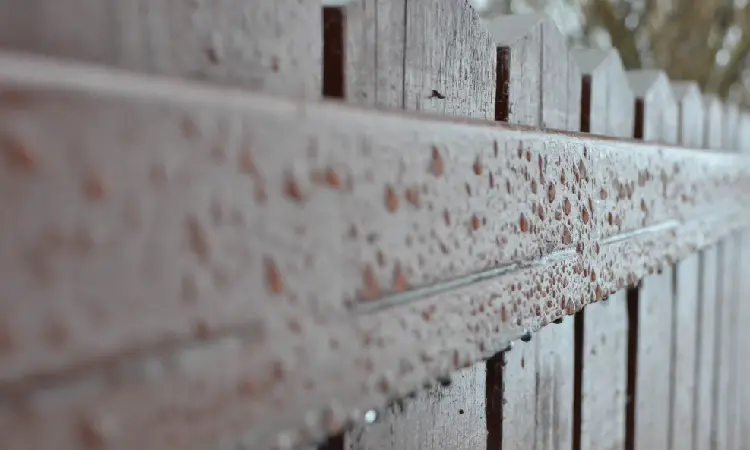
When you paint on wet wood, the paint cannot properly adhere to the wood. The paint will begin to crack and peel after a short time.
The paint needs to be able to soak into the wood, but if the wood is filled with water, the paint will not be able to be absorbed into the wood.
If you must paint wet wood, make sure you use water-based paint. I am sure you already know that water and oil do not mix well.
The wood is filled with water, which will already cause adhesion issues. If you then paint the wet wood with oil-based paint, you practically guarantee the paint will not adhere.
Can You Prime Wet Wood?
It is possible to prime wet wood. You should wait until the moisture content is at the ideal percentage per the primers label.
A primer is designed to help paint adhere to a surface. However, it can be difficult for a primer to adhere to a wet surface.
The primer will often peel and crack when applied to a wet surface. You can use water-resistant and waterproof primers.
The paint will adhere better to these primers, but the primer may still have issues adhering to the wood surface.
FAQS: Painting Wet Wood
You know how to test the moisture content of the wood. You know how to dry the wood faster.
But maybe you have a few other questions that I did not talk about. Then keep reading as I answer some other commonly asked questions about painting wet wood.
1. Can You Paint a Damp Wooden Fence?
Technically, you can paint anything you want. The better question is, will the paint properly adhere to damp wood?
The answer depends on the moisture content of the wood. Damp wood may have a moisture content of 12% or 50% because everyone’s definition of damp is different.
You should test the moisture content of the wood. If the moisture content is under 15%, the paint will properly adhere to the wood, and you should have no issues.
If the moisture content is over 15%, you can still paint the wood, but the paint may not be long-lasting.
You should, without a doubt, prime the wood with a waterproof or water-resistant primer. This will help the wood absorb the paint properly.
The moisture in the wood can cause adhesion problems. The primer can help combat any adhesion issues that may arise.
The best advice is to let the wood dry out as much as possible. You can not control the weather, and unfortunately, it may rain the day before you finally have time to paint your fence.
But you can try a few of the earlier-mentioned methods to help the wood dry faster.
2. What Happens if it Rains Right After Painting?
So you painted your wooden fence and got a surprise rainstorm. Or maybe you want to paint your fence, but you know it will rain the next day. How will the rain affect your paint job?
The rain can cause the paint to wash away if it is not fully dry. The rain can also cause streaks and drip marks. Some paints can take upwards of eight hours to dry.
Others may be dry within an hour. However, rain can still damage the paint.
It can take a couple of days for the paint to develop the strength to withstand rain. All paints are made with solvents mixed into them.
As these solvents evaporate, the paint begins to form a hard shell. It can take several days for the solvents to evaporate and the paint to fully harden.
You should always check the forecast before painting. You should look for future rainstorms and humidity.
Try to paint when the weather is clear and sunny for a couple of days. Some of you may live in areas where the weather changes daily.
Just be mindful of the rain and how it can affect your paint job.
3. How Soon Can You Paint After It Rains?
At a bare minimum, you should wait at least three days after it rains to paint. If you only experienced a very light and minor shower, you should be able to paint the next day.
The basic rule of thumb is the longer it rains, the longer you have to wait to paint.
Thankfully, there are a couple of things you can do to speed up the drying time of the wood.
Make sure you test the moisture content of the wood whether you try to speed up the drying time or not. You never know when the wood will become dry enough to paint.
You can try using a fan, a hairdryer, or paper towels to dry the wood. Which method you use depends largely on what kind of wood and how much wood you are drying. The hands-down best option is to use the sunlight.
Sunlight is not only good for your skin. It is also good for drawing moisture out of wood.
There is nothing that will dry the wood faster than direct sunlight.
Verdict
It is possible to paint wet wood. But, it is not highly recommended. The paint will have adhesion issues due to the water content of the wood.
The paint may last for a couple of days or even months. However, it will not stand up to the test of time.
You should wait until the moisture content of the wood is less than 15%. It can take anywhere from one day to a whole week for wood to dry.
Luckily for you, you can do a couple of things to speed up that drying time.



